-
Schachbücher
- Biographien
- Chinesisches Schach
- Computerschach
- Endspiele
-
Eröffnungen
- Aljechin-Verteidigung
- Allgemeine Lehrbücher
- Alt-Indisch
- Budapester Gambit
- Caro-Kann
- Damenbauernspiele
- Damengambit
- Damenindisch
- Englische Eröffnung
- Englische Verteidigung
- Eröffnungsfallen
- Flankeneröffnungen
- Französisch
- Gambits
- Grünfeldindisch
- Halboffene Spiele
- Holländisch
- Italienisch
- Königsgambit
- Königsindisch
- Londoner System
- Morra-Gambit
- Modernes Benoni
- Moderne Verteidigung
- Nimzowitsch-Indisch
- Offene Spiele
- Pirc-Ufimzew
- Repertoirebücher
- Réti
- Sizilianisch
- Skandinavisch
- Spanisch
- Unregelmäßige Eröffnungen
- Wolga/Benkö-Gambit
- Heiteres
- Lehr- und Trainingsbücher
- Mittelspiele
- Partiensammlungen
- Problemschach
- Roman
- Schachgeschichte
- Schachspsychologie
- Turnierbuch
- Verschiedenes
- Zeitschriften
- Erzählung
Produkte filtern
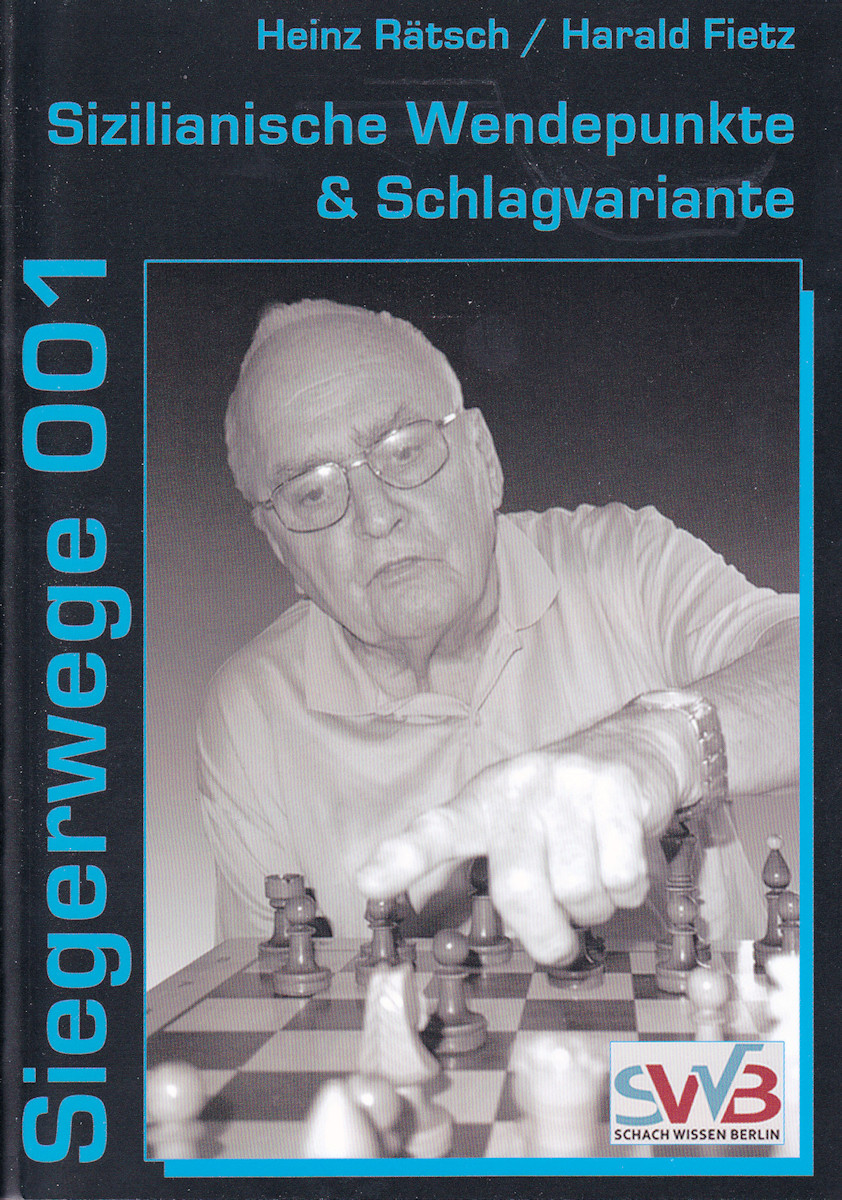
Es in die Wertungsregionen von 1500 bis 2000 zu schaffen, ist für ehrgeizige Jugendliche und die Mehrzahl der Vereinsspieler Ziel einer erfolgreichen Schachbeschäftigung. Für das Selbststudium wie auch als Trainingsmaterial für den Coach eignet sich diese Buchreihe aus der Feder von Heinz Rätsch und Harald Fietz. „Siegerwege“ soll Gewinnermentalität fördern; jeder kann die Geschicke seiner Figuren selbst bestimmen. Die Partien und Stellungen wurden vom Schulschach-Eleven bis zum angehenden Großmeister getestet. Der frühere DDR-Nachwuchstrainer aus Gotha, der nach der Wende Frauen-Nationaltrainer und dann Bundesnachwuchstrainer war, schöpft dabei – wie auch der biografische Rückblick anhand von denkwürdigen Partien belegt - aus über 50 Jahren Praxis als Spieler und Coach. Heinz Rätschs Fundus von der Schachbasis und der Meisterpraxis wird von Harald Fietz, Schachlehrer und Autor aus Berlin, durch thematische Beispiele aus der internationalen Schachszene ergänzt. Der erste Band widmet sich einerseits Wendepunkten in der Sizilianischen Eröffnung und will andererseits mit dem Blickwinkel der von Rätsch entwickelten Schlagvariante das taktische Auge schulen. Der Band hilft Trainern, Schachschüler beim Lernen in Bann zu ziehen und dauerhaft zu motivieren. Schachkönnen weiterzuentwickeln bedeutet vor allem zu verstehen, wo konsequent gehandelt werden muss. Mit 135 Partien und Stellungen und über 400 Diagrammen werden viele praxisnahe Facetten der täglichen Turnierpraxis unter die Lupe genommen und anschaulich erklärt. Dieses Werk eignet sich vom ehrgeizigen Jugendspieler bis zum aufstrebenden Vereinsspieler. Das sind mit 90% die große Mehrheit aller organisierten Spieler und deren Spielanlagen werden in diesem Werk mit den Erfahrungen der Meisterpraxis verglichen. Als besonderen Service gibt im Zug der Ergänzung unserer Verlagswebseite ab September 2015 auf der Verlagswebseite www.wissen-im-wedding.de zum Herunterladen 188 Testaufgaben mit 47 thematischen Schwerpunkten (auf der Seite von Schach Niggemann ist der Download bereits verfügbar unter Download Siegerwege 001). Mit dem Trainingsprogramm lässt sich sowohl als Gruppe wie auch im Einzelunterricht auf einfache Weise das Training für einen Zeitraum von ein bis zwei Spielzeiten gestalten. Diese Art der Selbstkontrolle dient als ehrliche Standortbestimmung und bietet Stimulus, die im Buch aufgezeigten Denkhorizonte zu hinterfragen und so den Einklang mit dem eigenen Vorwissen herzustellen. ISBN: 978-3-9813348-14
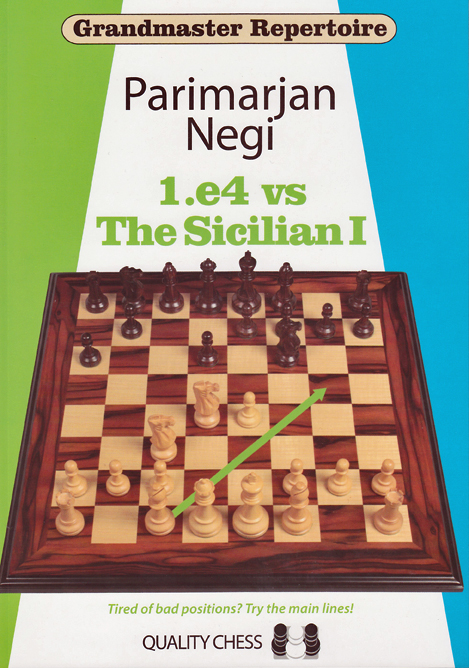
Ever since its inception in 2008, the Grandmaster Repertoire series has produced some of the world’s best opening books, but an elite repertoire with 1.e4 has always been missing – until now. In this, the second volume of the Grandmaster Repertoire – 1.e4 series, Indian superstar Parimarjan Negi tackles the fearsome Sicilian Najdorf, presenting his own world-class repertoire with 6.Bg5. Building on a foundation of tried-and-tested main lines, the author unveils a wealth of new ideas against the Poisoned Pawn and other critical variations, making this an essential addition to the library of every ambitious player. Parimarjan Negi is a former child prodigy who is the second-youngest player of all time to obtain the Grandmaster title. He was Asian Champion in 2012, and played on Board 1 for the Indian team which won bronze medals at the Tromsø 2014 Olympiad. "Negi's book is absolutely stunning. My jaw kept dropping at the attacking ideas that Negi exposes in this book. Just as in his previous book on the Caro-Kann & French, there is that beautiful mix of computer analysis, database research (including correspondence games) and superb insight that makes it a real learning experience as well as a super-GM repertory." GM Matthew Sadler, New in Chess "The younger generation tends to depend more on the computer. At the level they are now, why not add another dimension by reading more, I try to say, at least when you have great authors like Parimarjan Negi. His books on the Sicilian are absolutely fabulous." GM Simen Agdestein, New in Chess "There seem to be so many new ideas it's an absolute must for high-level players who are willing to get involved in tussles involving 6.Bg5. The fact that the author also takes the time to explain the reasoning and the logic, even in sharp, almost irrational positions, is most helpful." GM Glenn Flear, New in Chess Yearbook "These days with stronger and stronger engines one might question the need for opening books, but this would be a mistake. While the strongest engines are analytical monsters they often work better with a strong guide, especially in the unbalanced positions that abound in the 6.Bg5 Najdorf. Negi is an excellent guide. 1.e4 vs. the Sicilian 1 is the perfect book for the ambitious 1.e4 player who is aiming for the maximum." IM John Donaldson "A fantastic book. This is the second entry in GM Parimarjan Negi’s 1.e4 series, the first of which (1.e4 vs The French, Caro-Kann and Philidor) deservedly won the 2014 ChessPub.com Book of the Year award. In his new book Negi turns 6.Bg5 into a fearsome weapon against the Najdorf suitable even for his Grandmaster readers. This is a serious book for advanced players, one that will drive the theoretical discussion on the Najdorf for the foreseeable future." John Hartmann, Chess Life ISBN: 978-1-906552-39-8
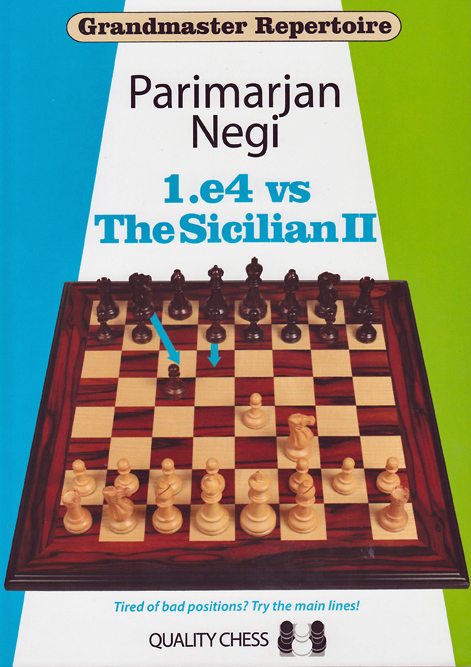
The third volume of the Grandmaster Repertoire – 1.e4 series tackles many challenging Sicilian lines – the Dragons, Rauzer, Sveshnikov and Kalashnikov. Building on a foundation of critical main lines, Negi reveals an arsenal of new ideas, making this an essential addition to the library of every ambitious player. Parimarjan Negi is a former child prodigy who is the second-youngest player of all time to obtain the Grandmaster title. He was Asian Champion in 2012, and played on Board 1 for the Indian team which won bronze medals at the Tromsø 2014 Olympiad. Reviews of the previous volumes: “It’s so good! It shows everything that you need to produce world-class preparation... Negi’s book is absolutely stunning. My jaw kept dropping at the attacking ideas that Negi exposes in this book.”GM Matthew Sadler, New in Chess “Every now and then, every once-in-a-FIDE-cycle, a book comes along that seriously impresses me. And recently, I received another of these rare, pleasant shocks. Indian GM Parimarjan Negi’s first book of his 1.e4 repertoire series is a real stand-out, an excellent piece of chess authorship.”GM David Smerdon "Another instalment of Parimarjan Negi's continuing quest to make all opening books for Black against 1.e4 obsolete. Negi is actually a godsend for a book reviewer because I can more or less repeat what I said in my previous columns! Once again this is a work of the very highest quality. I'm not a lifelong Open Sicilian player so I sometimes feel a little insecure judging the quality of the analysis. I tend to compare the lines Negi suggests with other books I’ve read recently to see whether he addresses their recommendations. He rarely fails me!" GM Matthew Sadler, New in Chess "The younger generation tends to depend more on the computer. At the level they are now, why not add another dimension by reading more, I try to say, at least when you have great authors like Parimarjan Negi. His books on the Sicilian are absolutely fabulous." GM Simen Agdestein, New in Chess "Even after all these years, I still get a kick when I receive a new chess book. But there’s something special about getting a Negi book. Perhaps it’s knowing that the pages are full of exciting and practical novelties, or maybe it’s an expectation that each volume contributes concretely to furthering modern opening theory. Or maybe I just like the writing. Regardless, the third of the series lived up to my hopes once again. To sum up, this book is once again an outstanding work and worth every penny, if only on a novelty quota alone. When I review a new book, I review HARD, and I go out of my way to look for holes. This makes it difficult for any author to meet my high expectations, but Negi continues to impress me. If I weren’t so lazy, I’d even take up the Open Sicilian myself after reading this one! Another Negi book, another five stars." GM David Smerdon (full review) "The Glasgow based firm Quality Chess continues to produce top of the line opening books that one could only dream of a decade ago. Its latest effort is by the Indian Grandmaster Parimarjan Negi, his third book in a multi-volume series and arguably his best to date. The new work, 1.e4 vs. The Sicilian II, covers the Dragons Richter-Rauzer, Kalashnikov, Lowenthal and Sveshnikov in a level of detail that make for interesting reading for top Grandmasters, but in a style that is also accessible for much lower-rated, but ambitious players." IM John Donaldson ISBN: 978-1-907982-57-6
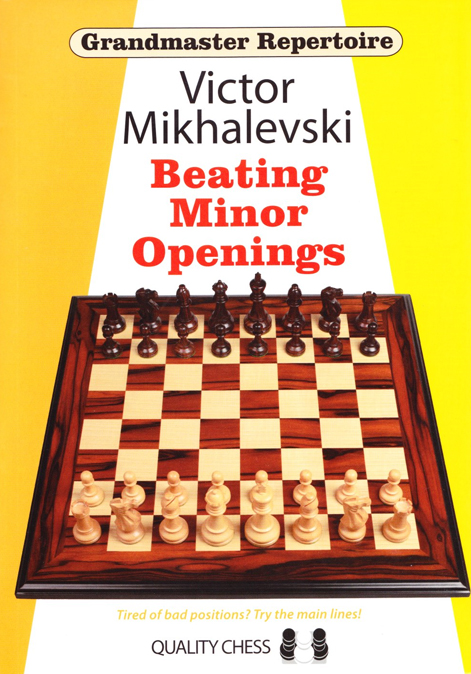
Beating Minor Openings offers a world-class repertoire for Black against every sensible first move apart from 1.d4 and 1.e4. GM Victor Mikhalevski advocates an ambitious approach for Black, with the aim of occupying the centre and fighting for an advantage, rather than mere equality, wherever possible. The most critical moves covered are 1.c4 and 1.Nf3. Against the latter, Mikhalevski supplies a range of replies to allow for transpositions to most queen’s pawn openings. In a review of Mikhalevski’s previous book for Quality Chess, IM John Cox commented: “Given the goal the book has set itself, I don’t believe the job could have been done better.” Victor Mikhalevski is the reigning Israeli Champion and is renowned as a leading theoretician. ISBN 978-1-907982-46-0
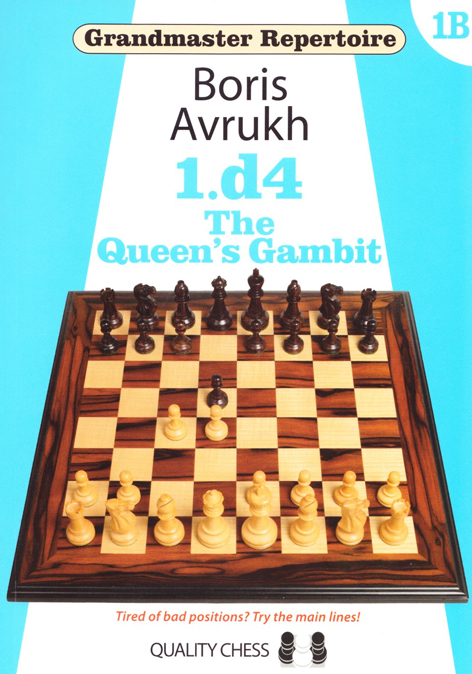
When Boris Avrukh released his 1.d4 repertoire in 2008, it revolutionized chess opening books. As GM Michael Adams said: “The high-quality Grandmaster Repertoire series has taken this format to a completely different level.” Or as GM Glenn Flear put it: “This book represents nothing short of a technological advance in chess opening theory.” Now Avrukh is back with an expanded, updated and revamped 1.d4 repertoire. Having covered the Catalan in the first instalment, Volume 1B supplies a top-class repertoire for White with the Queen’s Gambit, covering defences such as the Slav, Queen’s Gambit Accepted, Chigorin, Tarrasch and various others. The repertoire will be completed in Volumes 2A and 2B. Boris Avrukh is a grandmaster from Israel. He is an Olympiad gold medallist, former World Junior Champion and analysis partner of World Championship finalists. ISBN: 978-1-907982-90-3
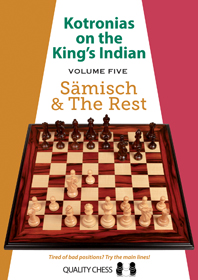
The King’s Indian Defence is one of Black’s most combative responses to 1.d4. A favourite of both Fischer and Kasparov, it remains a popular weapon at all levels of play. In this, the fifth and final volume of the epic Kotronias on the King’s Indian series, Grandmaster Vassilios Kotronias completes his masterpiece by tackling all major variations after 1.d4 Nf6 2.c4 g6 which were not covered in the previous volumes. Starting with 3.f3 and working through numerous set-ups including the Smyslov, Sokolov and Seirawan Systems, followed by the Four Pawns Attack and culminating in the mighty Sämisch System, Kotronias has produced perhaps the finest book of his career. As in previous volumes, the author supplements the hard analysis by sharing his expert knowledge of typical manoeuvres and positional motifs. Once again, a selection of test positions has been provided, enabling the reader to sharpen his tactical skills and improve his middlegame understanding. Vassilios Kotronias has been Greek Champion ten times. He is feared for his profound opening preparation, and is one of the world’s foremost experts on the King’s Indian Defence. ISBN: 978-1784830366
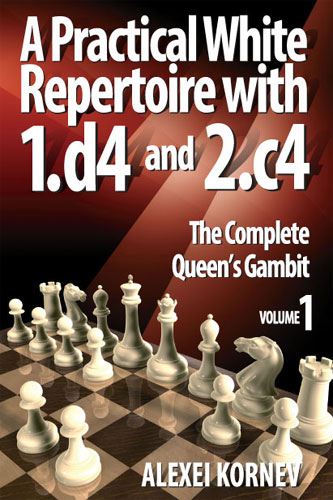
Excerpts from the intro:"Sooner or later every chess player faces the problem of building his or her opening repertoire. This is particularly difficult when you play with White, since you need to be well prepared against all of Black’s possible responses. However, most players, including the author, have no inclination to devote all their time to studying opening variations. Therefore, we have decided not to cover 1.e2-e4. As our main opening weapon for White we have chosen the closed openings arising after 1.d2-d4, in which an understanding of chess and a knowledge of the typical resources in the middle game and the endgame are often much more important than a detailed knowledge of a large number of variations. We have analysed the most straightforward possibilities for White, generally based on the development of the knight to c3 and the fastest possible occupation of the centre with pawns.Unfortunately it is impossible to cover all the possible theory after 1.d2-d4 for White within a single book, so the author plans to publish two further volumes. The first book is devoted to the move 1...d7-d5 for Black. I believe that the most challenging defences for White to face are the Queen's Gambit Accepted (Part 2), the Queen's Gambit Declined (Part 4) and the Slav Defence (Part 5). A few less popular options for Black are covered in Parts 1 and 3. In the second book we shall deal with the openings in which Black fianchettoes his dark-squared bishop. These are first and foremost the Gruenfeld and the King's Indian Defence. In book three we shall analyse in detail the Nimzo-Indian Defence and a few other defences not covered in our first two books. This series has been written for players of all levels. The author hopes that it will be useful for grandmasters as well as for amateur players." Alexei Kornev is an international grandmaster and coach. In 2001 he took the silver in the Russian Cup Final. He is also the winner of a number of international tournaments. Highest Elo so far – 2582. For many years, he has been senior coach of the junior chess school in the city of Vladimir. His students are often among the winners of the Russian junior championships for boys and girls. ISBN: 978-9548782937
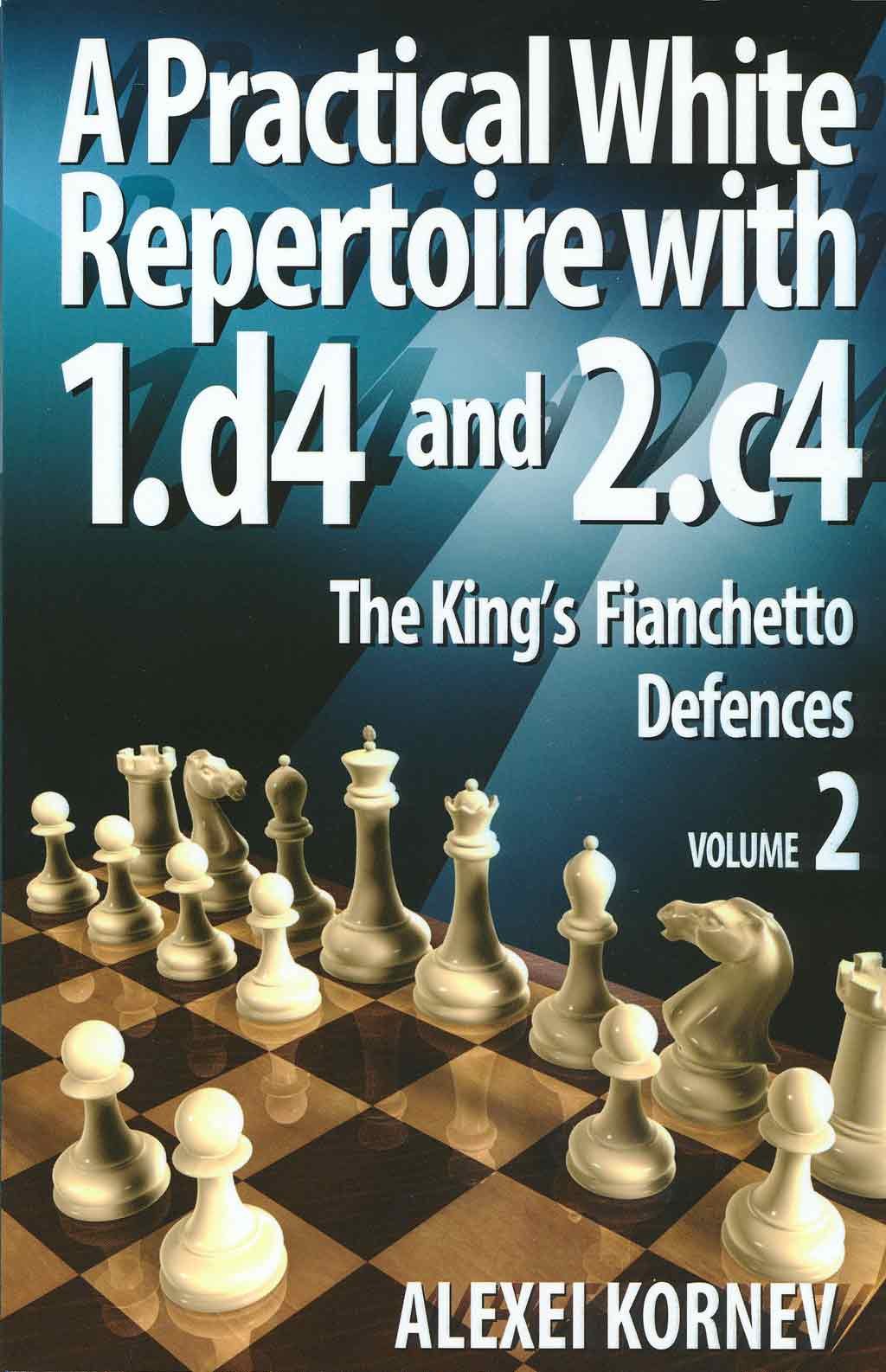
Alexei Kornev is an international grandmaster and coach. In 2001 he took the silver in the Russian Cup Final. He is also the winner of a number of international tournaments. Highest ELO so far - 2582. For many years he has been senior coach of the junior chess school in the city of Vladimir. His students are often among the winners of the Russian junior championships for boys and girls.

Alexei Kornev is an international grandmaster and coach. In 2001 he took the silver in the Russian Cup Final. He is also the winner of a number of international tournaments. Highest ELO so far - 2582. For many years he has been senior coach of the junior chess school in the city of Vladimir. His students are often among the winners of the Russian junior championships for boys and girls.
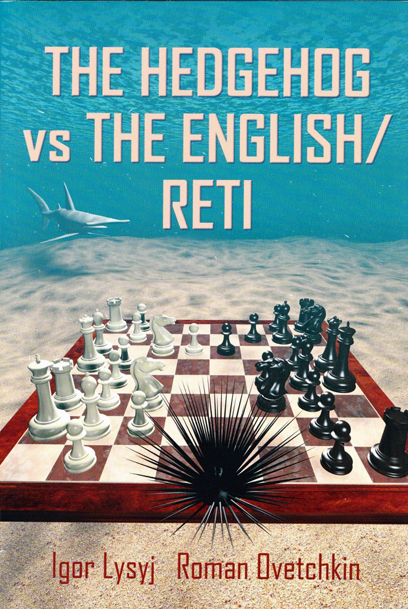
In the last five years we have been observing a noticeable trend of the chess elite to evade the warn off central pawns moves 1.e4 and 2.d4 in favour of 1.c4 and 1.Nf3. Naturally, lower ranked players eagerly followed in the leader's footsteps - indeed not only Carlsen and Kramnik tired of struggling against the Berlin wall or exhausting themselves in futile attempts to refute the Gruenfeld. This book offers to meet the new challenges to Black by building an English Hedgehog formation. The authors not only recommend a contemporary move order after the ditch has been set, but they also explain how to reach this goal since White's first moves. The book is all the more convincing as it is based on the successful practical experience of one of the authors. ISBN: 978-6197188134
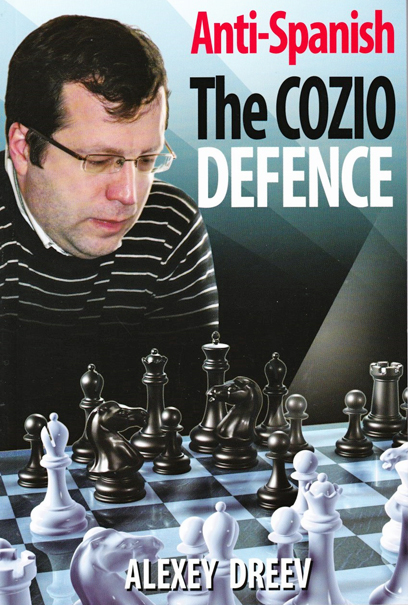
Dreev offers a new look at the old system 1.e4 e5 2.Nf3 Nc6 Bb5 Nge7 which is one of the most challenging ways to combat the Spanish. ISBN: 978-6197188011
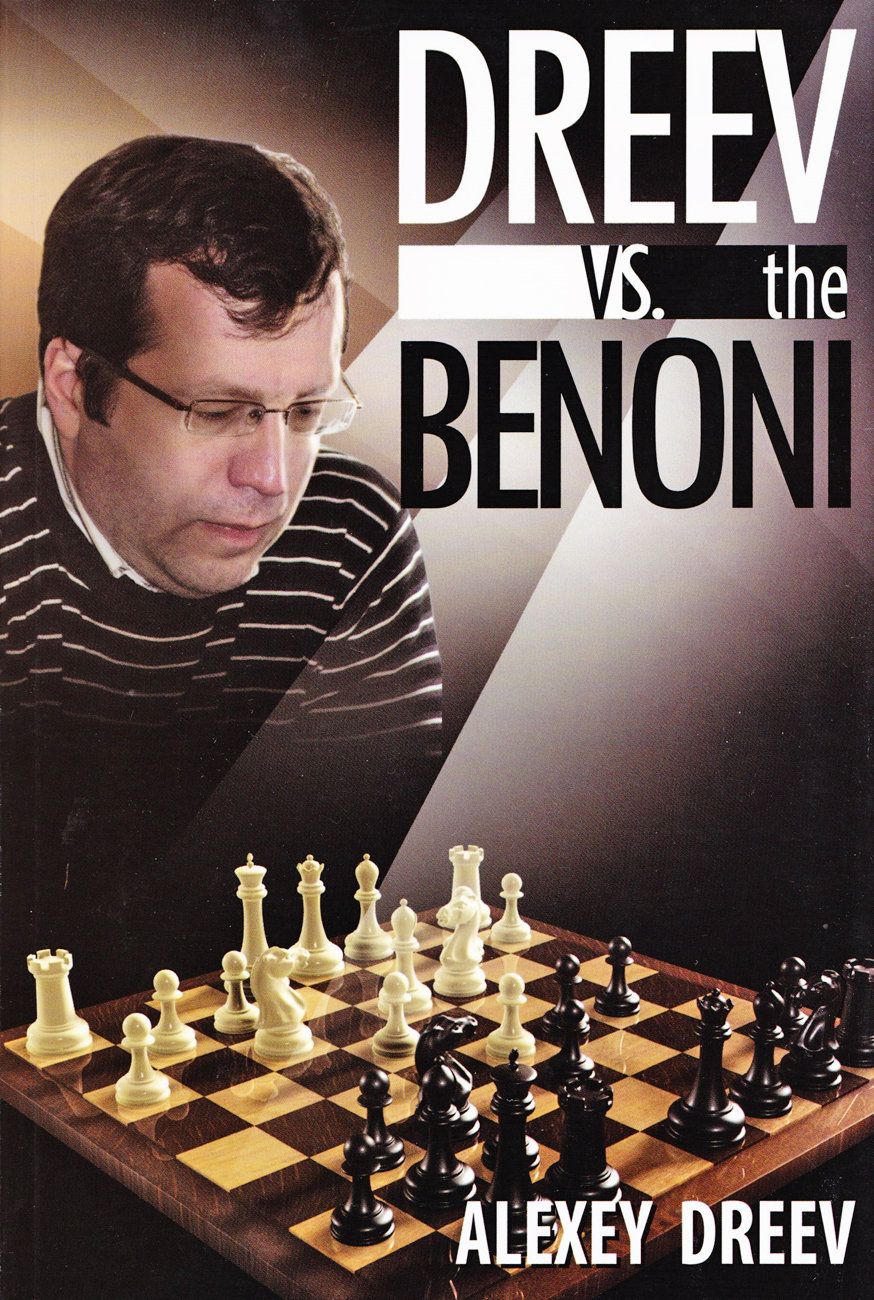
The Benoni Defence can be divided into two main structures, which are very different in concept: the Modern Benoni, 1.d4 Nf6 2.c4 c5 3.d5 e6 4.Nc3 exd5 5.cxd5 d6 and the Czech (or Old) Benoni 1.d4 Nf6 2.c4 c5 3.d5 e5 which is much less dynamic. This book deals with both systems. Black can reach the main line of the Modern Benoni in either of two ways: 2...c5 3.d5 e6, or 2...e6 3.Nf3 c5 4.d5 еxd5. Dreev shows the best move orders which allow White to reach the same main tabia with e4,Bd3,h3. Dreev: "In this book I have analysed all Black’s possible responses that deserve attention and in a great many variations I have suggested promising possibilities for White which are new to theory." Alexey Dreev is one of world's best experts on the Benoni. His previous books, published by Chess Stars, are My One Hundred Best Games, The Moscow & Anti-Moscow Variations and The Meran & Anti-Meran Variations. Dreev was twice World junior champion (under 16) in 1983 and 1984, silver medalist under 20 in 1984, European champion under 20 in 1988. With the Russian team, he was three times Olympic gold medalist and once he got the silver, he also won two times the World team championship – in 1997 and 2005. European champion for 2012 in rapid chess. ISBN: 978-954-8782-92-0
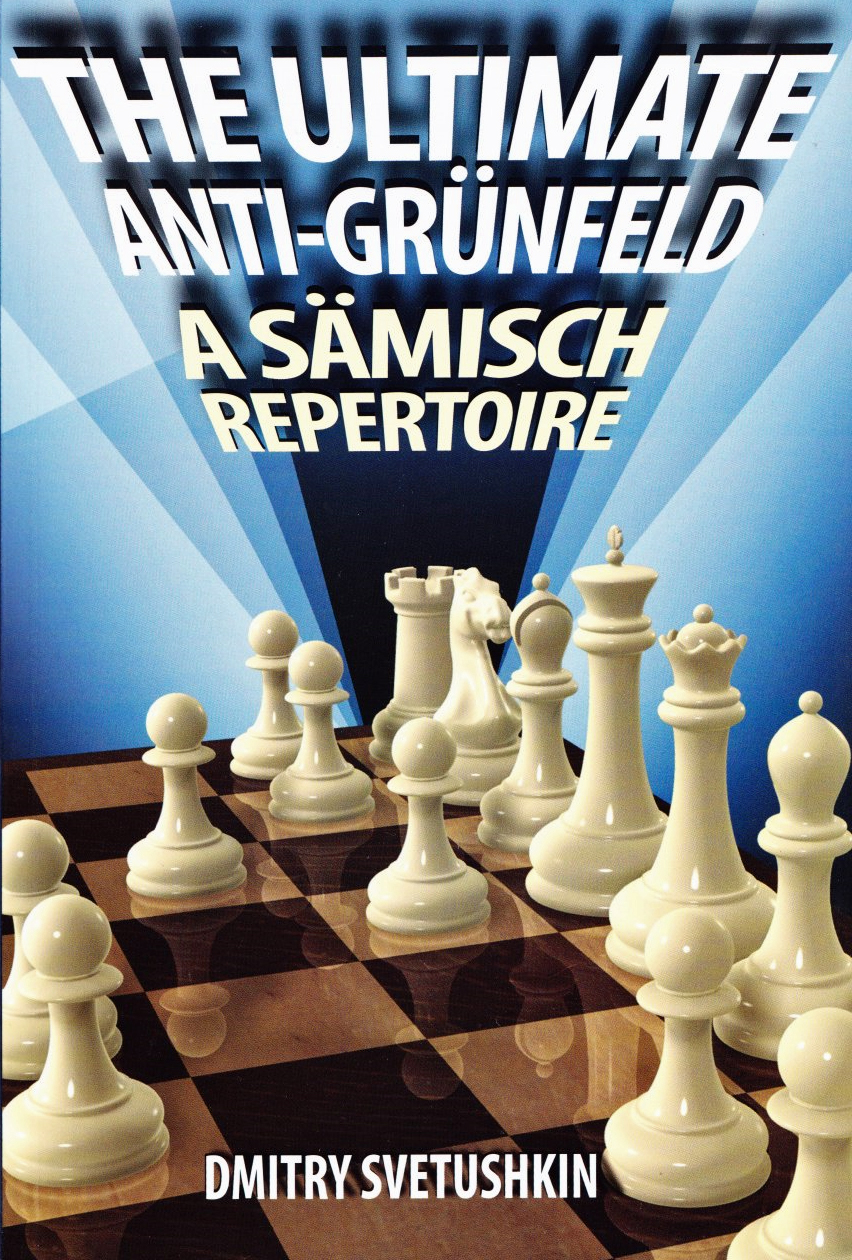
By playing 1.d4 Nf6 2.c4 g6 3.f3, White kills three birds with one shot. First of all, this is a natural way of seizing space. The second merit of 3.f3 is that it throws the Grünfeld fans out of their main repertoire. The third point is that it allows White to delay the development of his queen’s knight. While in most systems its natural stand is on c3, against ...c5 plans it may go to d2 or a3, leaving c3 free for the other knight. Of course, Black can also choose the King’s Indian. Then the Sämisch is probably the most straightforward and natural answer. White’s result in this particular branch (without 3.Nc3) is above 60%! Higher than any other system against the K.I.D. GM Dmitry Svetushkin is one of the best Moldovan players. His current rating is 2608. He learned chess at 5, at 12 he was already winning national championships for kids. Svetushkin played in 6 Olympiads and at the last one scored "+6" - an all-time record for his team. He works a lot with V.Bologan and coaches young talents. ISBN: 978-954-8782-94-4
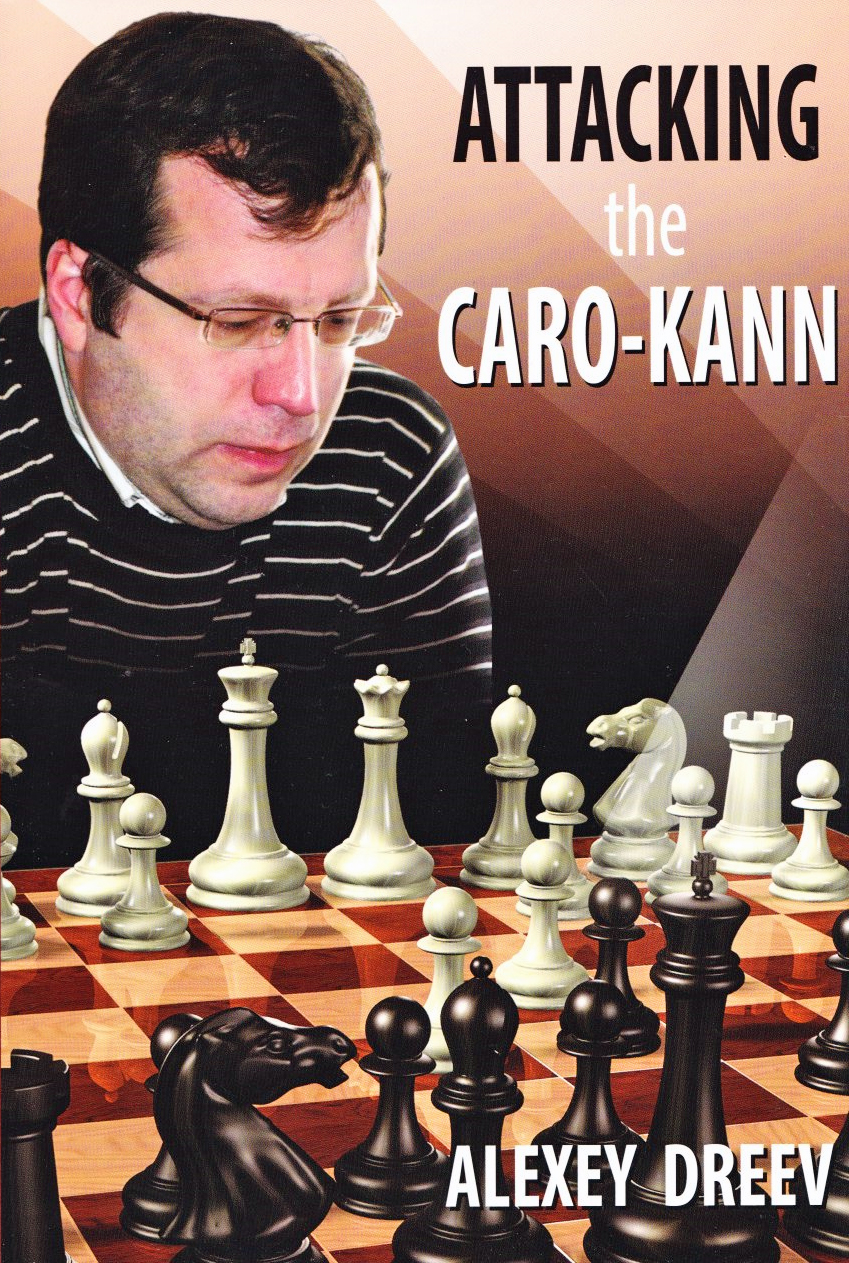
The advanced variation of the Caro-Kann Defence is a very good alternative to the classical variation 1.e4 с6 2.d4 d5 3.Nd2 (or 3.Nc3) dxe4 4.Nxe4 Bf5 (4...Nd7). The theory after 3.e5 has developed extensively nowadays too; nevertheless, the positions of the advanced variation are considerably less studied than those in the classical lines, in which there is much less practical fight and much more a comparison of thorough theoretical erudition.“My long-term experience in playing the Caro-Kann Defence with Black has shown to me that his problems in this variation are not easy to solve at all. The variation we analyse in this book often leads to non-standard situations on the board, so I would recommend it to players who are inclined to enter complicated and unusual positions and who hope to seize the initiative and to maintain it skilfully.” – writes Dreev. ISBN: 978-6197188042

The Berlin Defence has been a highly popular opening in top level chess ever since Vladimir Kramnik famously used it in the 2000 World Championship match to wrest the title from Garry Kasparov. Club players often hesitate to include ‘the Berlin’ in their repertoire because they see the typical Berlin Wall endgame as complex and daunting. International Master Luis Bernal has unraveled the Berlin and made it accessible for amateur players. His practical guide is fully up to date, explains typical formations and strategies, and presents new ideas and resources in the old Berlin Wall structures. But today, the Berlin is much more than just the Wall. Bernal systematically leads you through the labyrinth of the various modern Anti-Berlins with their constant flow of new ideas. He also presents a number of tricky sidelines that could catch your opponent off guard. This no-nonsense, state-of-the-art guide finally brings this important chess opening within reach of club players. With clear explanations, concise conclusions and didactic exercises. Luis Javier Bernal (1971) is an International Master from Spain, an experienced chess trainer and a well-known journalist. CHESS Magazine (UK): "These days White often dodges the main line, not least with 4.d3, and here Bernal’s coverage is especially up to date, while also including at times some slightly offbeat counters." Heins Daubler, Der Neue Tag Newspaper: "The claim of ‘unraveling’ the Berlin is completely justified (..) An extremely instructive and clear-cut work." Glenn Flear, author of 'Starting Out: the Open Games':“The book is classy. Luis Bernal investigates the latest theoretical developments, but hasn't skimped on explanation. He covers with equal verve both sidelines and cutting-edge variations with enough detail to get the message across, but without over-stuffing the notes (..) A rich tapestry of ideas, drama, and humour (..) It's an excellent example of an author giving the reader essential information, rather than propaganda.”
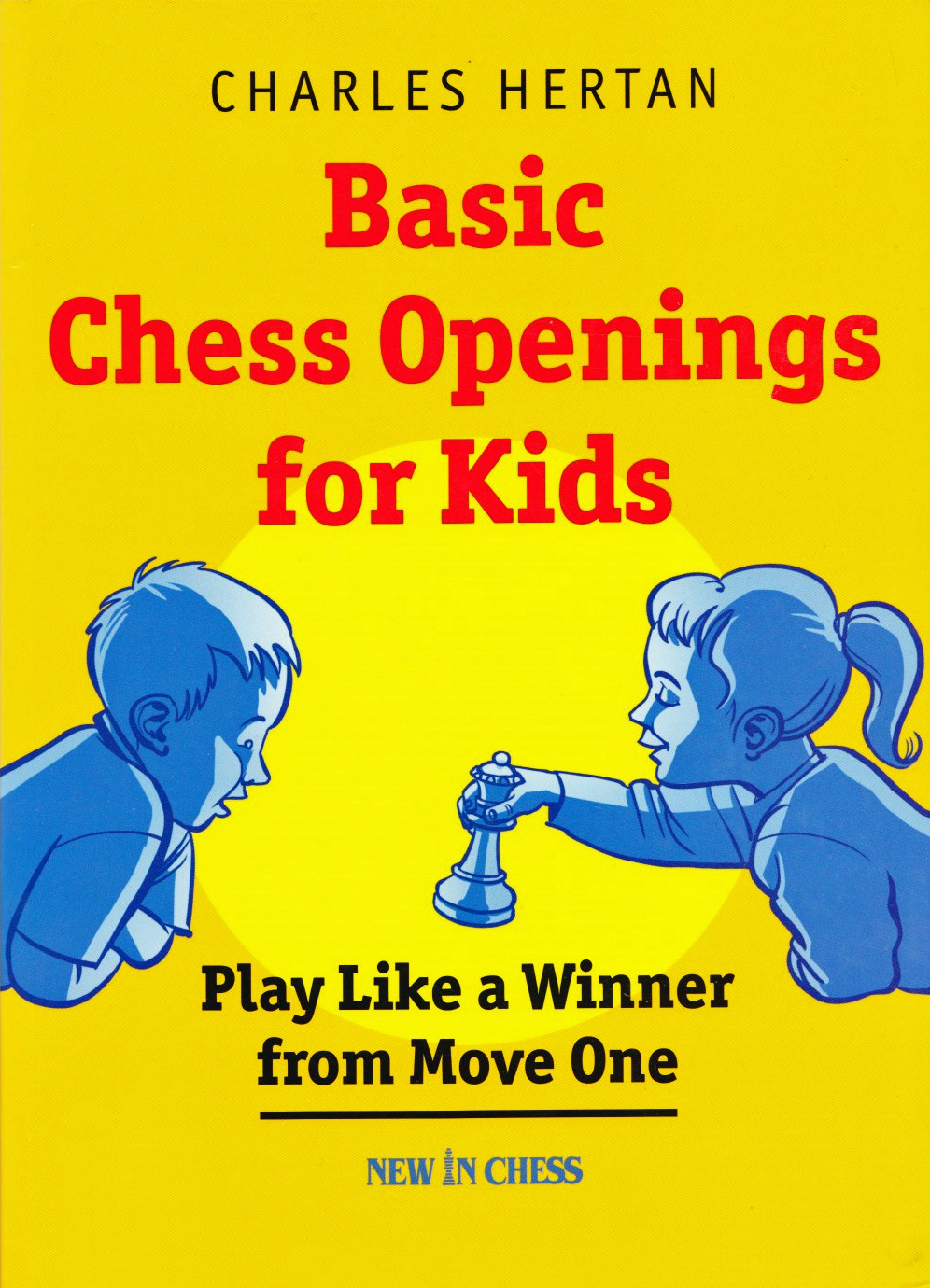
Award-winning author Charles Hertan knows what kids really need to know (and want to know) about getting their pawns and pieces ready for action. Traditional chess opening books concentrate on the variations in different openings. Charles Hertan believes that for beginners and advanced beginners memorizing lines is not only boring but also a waste of time. Hertan’s approach is different. He helps kids to develop a solid understanding of the fundamental opening principles. What are the properties of each chess piece, and how can they be mobilized effectively to work together and get a strong position on the board? In his trademark humorous and kidfriendly way, Hertan teaches what you should actually be trying to achieve at the start of a game. Kids will love learning how to avoid The Five Most Common Opening Mistakes. This is a fun, easy-to-use, down-to-earth and accessible chess opening primer. Charles Hertan is a FIDE Master from Massachusetts who has been teaching kids for more than thirty years. He won the ChessCafe Book of the Year Award and authored the best-selling Power Chess for Kids books. Sean March, CHESS Magazine (UK):"I like the way in which Hertan breaks down the section on development to focus on each individual piece (..) The explanatory notes are perfectly accessible to juniors and novices (..) A very accessible book for juniors to take thier first steps into opening theory." Max Euwe Centre, Amsterdam:"In his newest book Hertan discusses good opening play. He starts with basic principles such as development and activitiy. Hertan also gives advice on how to play certain openings and tips on errors he sees children make. An entertaining book." IM Dirk Schuch, Rochade Europa Magazine:"Very good for trainers or parents with a chess background." GM Paul Motwani:"Excellent. Ideal for young players who already have basic knowledge of the rules of the Royal Game, including how the chess pieces and pawns move, and are now looking to improve to the next level and beyond." John Hartmann, Chess Life Magazine (US):"Hertan's basic strategy --investigating what each piece 'likes' to unpack good piece play-- is solid and his ideas-based approach of the opening is good for beginners." Kees de Groot, Reformatorisch Dagblad:"Hertan's clear explanations are never infantile. That's why this book will also appeal to adults." Praise for 'Power Chess for Kids' by Charles Hertan: Edward Scimia, chess.aboutcom:"The kids I work with got a kick out of it.” Martin Rieger, Rochade Europa Magazine:“When my youngest son saw the book, he immediately got excited. The drawings and the childfriendly lay-out had a magic impact on him.” Dr Alexey W. Root, former US Women’s Champion, author of ‘Children and Chess’:“The organization of the book is stellar, the layout is cheerful (with cartoon-style characters) and the material is important for chess improvement.” ISBN: 9789056915971
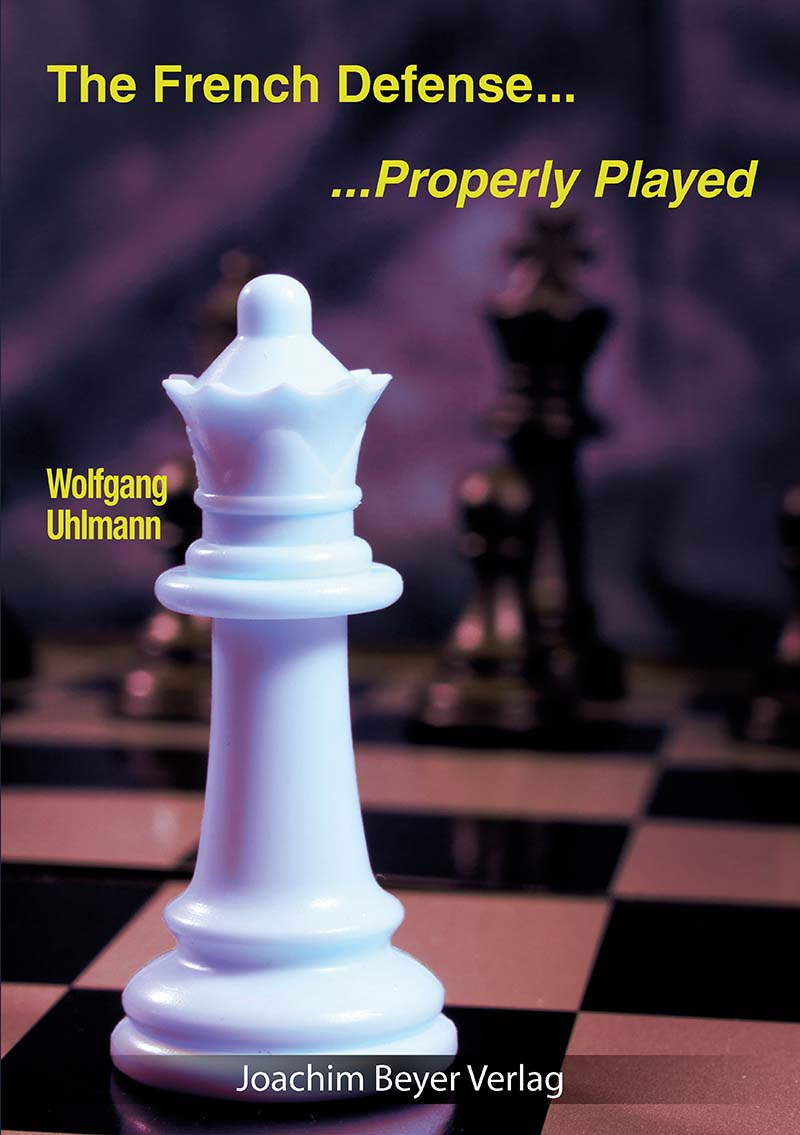
The French Defense (1.e4 e6) caught the attention of the chess world in the first half of the 19th century, and has developed to be one of the most important and popular openings. The author of this book, the German Grandmaster Wolfgang Uhlmann, is a world-renowned expert who has tested this opening and enriched its theory over his entire career. 76 selected games (mostly his own) document the considerable success he has achieved with his favorite opening, often against the strongest opponents. The theoretical remarks integrated into the annotations provide the reader with well founded instructions for the treatment of this opening.It was not the author's goal to present a complete survey of all the systems and lines that build the French Defense but instead to put the positional evaluation and the creation of a plan in the foreground. At the same time this compilation traces the career path that the author has taken with his favorite French lines. Uhlmann's work is now available in the 4th updated and amended edition. In particular, the author has added five more recent games by other French specialists to the collection. Grandmaster Wolfgang Uhlmann (born in Dresden in 1935) was the strongest player of the GDR from 1958 to 1989 and participated in 11 chess Olympiads (10 times at the top board). At his peak, he belonged to the world's top players and celebrated outstanding successes in many national and international tournaments. And last but not least, he was active for many years in the German top league (Bundesliga) and has made a name as the author of numerous publications. ISBN: 978-3-95920-972-4
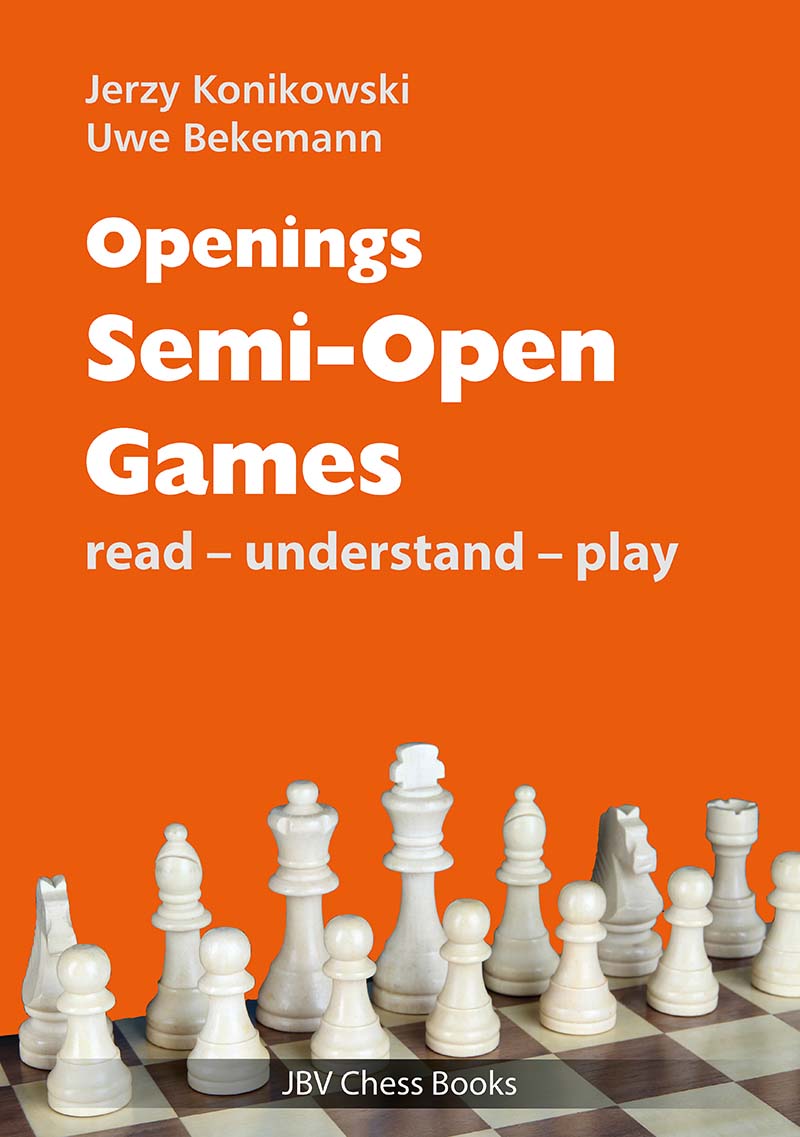
What does a chess player need who is familiar with the rules, but often gets into trouble right away in the opening? This question was the starting point for the authors before they began to compile their material. The result is a book that gives explanations to help the reader understand the 'Semi-Open Games' – such as the French Defense and the Caro-Kann Defense (note that the 'Sicilian Defense' was discussed in a separate volume) – and instructions to show him how to use them.And no matter if he is little or even completely unfamiliar with opening theory, this book gives him easy access to this difficult and comprehensive field. The ideas and plans behind each line are explained in detail to ensure that the reader understands them properly instead of just playing moves that he has learned by heart. Even the sense and purpose of single moves are ex-plained, if they are not quite obvious.Based on the knowledge that the reader will surely acquire by studying this book, it will be easy to build a game and play interesting, entertaining and – last but not least – successful chess. ISBN: 978-3-95920-977-9
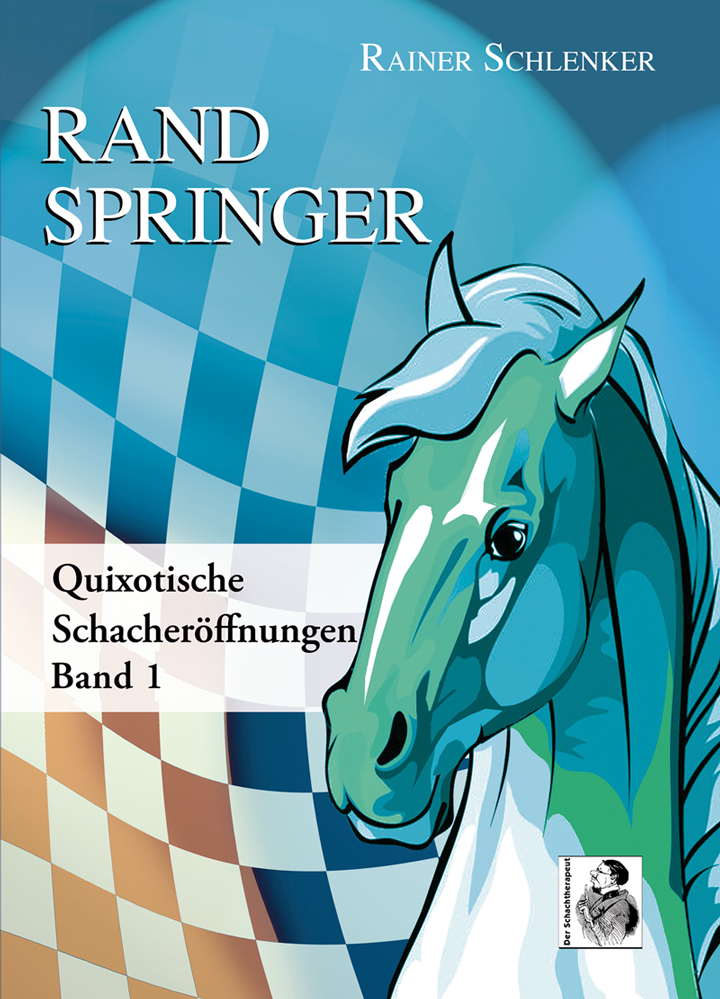
FRITZ furzt ... ... laut und vernehmbar, wenn Rainer Schlenker seine quixotischen Eröffnungen zum Besten gibt. Vor einigen Jahren hat er seinen "Arbeitsplatz" von Turniersälen und Vereinsheimen in örtliche Kaffeehäuser und sonstige Wärmestuben verlegt. Dort findet er regelmäßig spielstarke Versuchskaninchen, die er am Brett meist kunstvoll zerlegt. Sein Handwerkszeug stammt noch aus höheren Gefilden, beispielsweise der 2. Bundesliga und der nationalen und internationalen Turnierarena; manche seiner hier veröffentlichten Eröffnungsideen erblickten aber erst vor Kurzem das Licht der Welt. Das Buch soll als Anregung und Hilfestellung für alle experimentierfreudigen und mutigen Spieler dienen, die sich von neuen Ideen inspirieren lassen wollen. Vorhang auf! ISBN: 978-3947648153
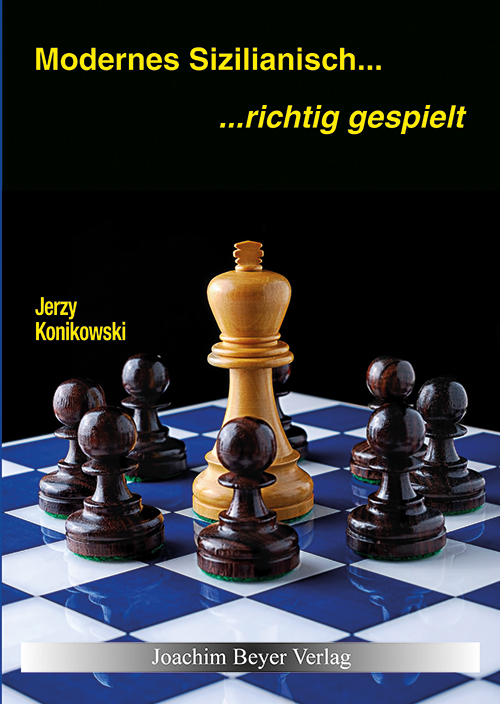
Nach 1.e2-e4 wird die Fortsetzung 1…c7-c5 bereits 1594 in einem Schachbuch des Italieners Giulio Cesare Polerio (1548-1612) erwähnt und erhielt ihren Namen „Giuoco Siciliano“ im 17.Jahrhundert von seinem Landsmann Schachmeister Gioachino Greco (1600-1634). Erst wurde die Verteidigung wenig in Turnierpraxis angewandt aber systematisch erregte sie im Laufe der Zeit allgemein immer mehr Aufsehen. Besonders nahm ihre Popularität seit der Mitte des 20.Jahrhunderts deutlich zu. Die Sizilianische Verteidigung ist heutzutage die meistgespielte Eröffnung gegen 1.e2-e4 und ihre Beliebtheit steigt unaufhörlich. Der Grund ist, dass hier viele scharfe und komplizierte Stellungen entstehen, mit vielen dynamischen Gegenchancen für Schwarz. Die Verteidigung bietet Spielern jeglicher Spielstärke, vom Amateur bis hin zur Weltspitze, einen breiten Anwendungsbereich. Aus Platzgründen ist es leider nicht möglich, alle Sizilianisch-Systeme in einem Buch vorzustellen. Der Autor hat sich daher entschieden, Ihnen eine der heute populärsten Spielweisen, das Najdorf-System, näher zu bringen. Ohne Zweifel führt dieses System zu kompromisslosem Kampf mit guten Gegenchancen für Schwarz. Der bekannte Schachautor FIDE-Meister Jerzy Konikowski erläutert mit seinem Buch die Geheimnisse der Sizilianischen Verteidigung. Auf der Basis von 18 theoretischen Kapiteln sowie einen praktischen Schlussteil erklärt er die strategischen und taktischen Raffinessen des Sizilianers. Der Leser erhält quasi ein komplettes Schwarzrepertoire gegen den Eröffnungszug 1.e2-e4 in die Hand. ISBN: 978-3-95920-104-9
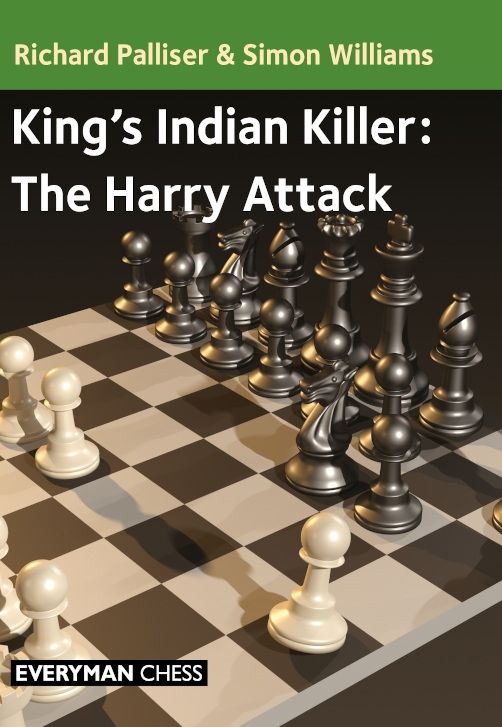
Do you want a simple and practical method to counter Black’s kingside fianchetto defences after 1 d4? A line that takes the initiative from a very early stage and creates difficult practical problems? If so, then The Harry Attack (1 d4 Nf6 2 c4 g6 3 h4!) is for you. At first this looks like some sort of joke or, at the very least, a weird outlandish line. Aren’t we all taught to focus on development and control of the centre in the early stages? What’s 3 h4 got to do with that? Perhaps surprisingly, this is a very difficult line for Black to counter effectively. This applies not just in practical play but also theoretically, where it is far from straightforward for Black even to find a route to equality. And when Black gets it wrong they are often on the receiving end of a very unpleasant miniature. You may be thinking that surely the best chess engines can show how to counter this line? No! One of the unexpected features of leading engine play is their enthusiasm for shoving the h-pawn up the board and they fully concur that 3 h4! is a very decent move for White. Many leading players have taken the hint and 3 h4 is frequently seen at elite level. Richard Palliser and Simon Williams (the GingerGM) provide a thorough guide to this fascinating line. They show how to adapt when Black chooses a King’s Indian set-up, a Grünfeld set-up, a Benoni set-up or even plays in Benko style. The Harry Attack is easy to learn and is perfect for unsettling players steeped in the theory of their favourite Indian defences.

Die Italienische Eröffnung ist eine der ältesten Eröffnungen der Schachgeschichte, die bereits im 15ten Jahrhundert erwähnt wurde, aber auch heute noch selbst auf höchster Ebene ein oft gesehener Gast ist, wie zuletzt beim WM-Kampf 2021 zwischen Magnus Carlsen und Jan Nepomnjaschtschi. Zwar hat der Herausforderer diese Partie verloren, aber allein die Anwendung der Italienischen Eröffnung zeigt, dass diese auch auf aller- höchstem Niveau eine ernstzunehmende Waffe ist.Die Italienische Eröffnung wird von vielen Weißspielern gewählt, um eine gehaltvolle Partie zu bekommen. Die Stellungen sind oft weniger konkret und taktisch als in anderen Eröffnungen, und da sie auch weniger weit ausanalysiert sind, bietet das moderne Italienisch eine gute Mischung aus unerforschten Gebieten und positionellem Verständnis. Mit diesem Buch verfolgt der Autor das Ziel, Spielern mittlerer Spielstärke die modernen Ideen der Italienischen Eröffnung zu veranschaulichen. Dabei werden solche Stellungen behandelt, die auf dem „langsamen" Plan von Weiß beruhen, wenn er also einen ruhigen und von positionellen Ideen geprägten Ansatz wählt. Es wird nicht etwa versucht, dem Leser ein vollständiges Repertoire zu bieten, sondern vielmehr, ihm die Ideen der entstehenden Mittelspielstellungen zu erläutern.Das Material umfasst vor allem die Systeme 1.e4 e5 2.Sf3 Sc6 3.Lc4 Sf6 4.d3 Lc5 5.c3 h6 6.0–0 d6 7.Te1 a6 8.a4 La7 9.Sbd2 0–0 10.h3 und 1.e4 e5 2.Sf3 Sc6 3.Lc4 Sf6 4.d3 Lc5 5.c3 d6 6.0–0 0–0 7.h3 h6 8.Te1 a5, von denen besonders letzteres in der aktuellen Praxis enorm an Popularität gewonnen hat.
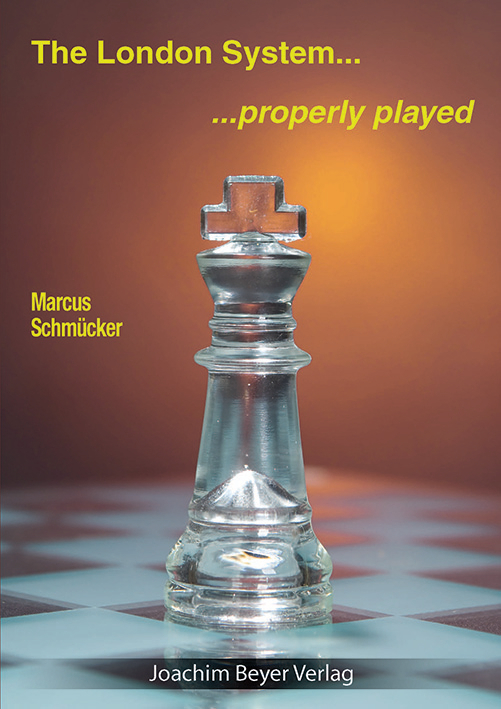
When the author’s first book about the London System was published a decade ago, this opening was almost exclusively played among amateurs. However, within the last years many things have happened, even including some sort of breakthrough on the highest level! And so none other than world champion Magnus Carlsen has developed such a liking for the London System, that he has used it even in important games and has achieved a number of nice victories. And he is by no means the only top player, as Kramnik, Grischuk and others have added it to their repertoire, too. The absolute guru of the London System, however, is and remains GM Gata Kamsky. He trusts it and applies it since his childhood, so to speak, and he sees no reason to change his mind.Meanwhile the London System has stepped out of the shadows, and so its surprise factor has lost some significance. However, this increase in publicity has no impact on its overall reliability because, on the other hand, its advantages have remained.It's easy to learn. It's extremely solid. It's often underestimated. It leads to interesting positions. It leaves space for own ideas. Mostly due to the quality of computer analysis, the opening theory of the London System has evolved tremendously. And so in almost every chapter improvements are to be found, just waiting for a chance to be tried out in practice!
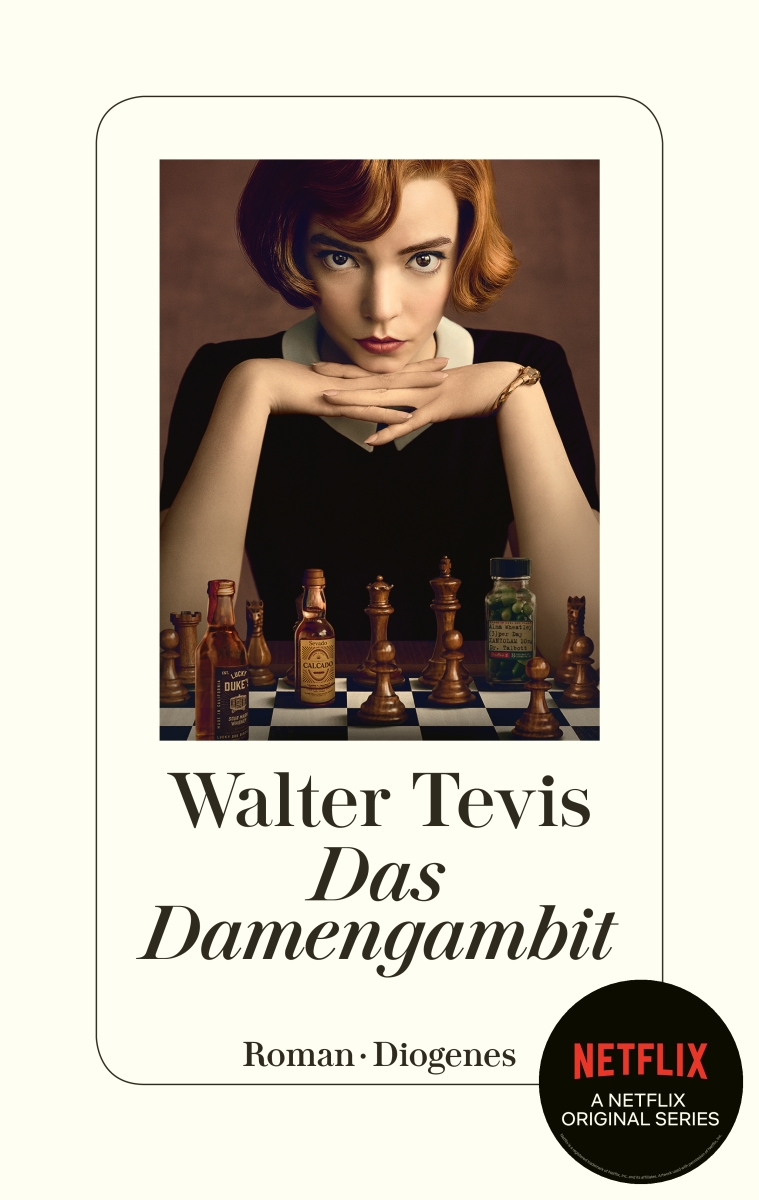
Mit acht entdeckt Beth Harmon im Waisenhaus zwei Möglichkeiten, der harten Realität zu entfliehen: die grünen Beruhigungspillen, die den Kindern täglich verabreicht werden. Und Schach. Das Mädchen ist ein Ausnahmetalent und gewinnt Turnier um Turnier, mit 16 spielt sie gegen lauter erwachsene Männer um die US-Meisterschaft. Ihr Weg führt steil nach oben, doch bei jedem Schritt droht der Abgrund von Sucht und Selbstzerstörung. Denn für Beth steht viel mehr auf dem Spiel als Sieg und Niederlage.Von Netflix verfilmt – der Serien-Welterfolg mit Anya Taylor-Joy. ›Golden Globes‹ für die beste Miniserie und die beste Hauptdarstellerin. 1983 in den USA erschienen, jetzt zum ersten Mal auf Deutsch: eine literarische Entdeckung.
